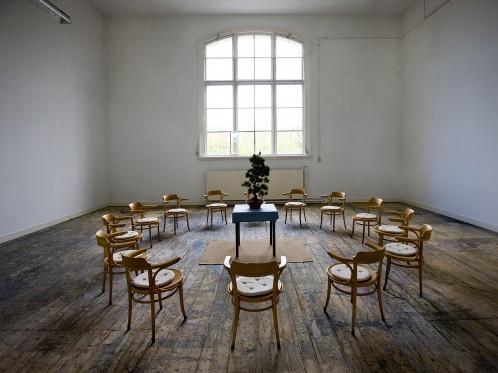“Can we leave things as they are?” (2010 -) is a combination of a social sculpture and a performance by Rory Pilgrim which is being realized over time at multiple locations. In the work Pilgrim creates a relationship between the decisions of a small group of elderly people from the local environment, and a message that will be broadcasted out to the city. The participants who are invited to the exhibition space discuss certain topics concerning collectivity and transformation. The outcome of the conversation leads to a musical score that is played on a carillon in the city. The first performance took place as part of the exhibition Offspring 2010 at De Ateliers in Amsterdam. The Hague, being the “City of Peace and Justice” will serve as a cultural backdrop for the work which is originally conceived and reflecting upon the historic speech and statement on 19th of May 1989 by Zhao Ziyang. Zhao personally made a speech urging the protesting students on Tiananmen Square to end their hunger strike. He called out to them, ‘We are already old, it doesn’t matter to us any more’, it was his last public appearance. After the incident, Zhao was placed under house arrest and replaced.
‘Art meets Science and Spirituality in a changing Economy’ is a mental sculpture of panel dialogues in 1990 in the Stedelijk Museum initiated by Louwrien Wijers. The conversations focus on the future of art, religion and money. With: David Bohm, John Cage, Ilya Prigogine, Dalai Lama, Lawrence Weiner, Marina Abramovic, Fritjof Capra, Robert Rauschenberg, among others. The prediction of the participants in the panel discussions is that we are moving from a “competitive society to a more compassionate society”. This is the growth the artists were aiming for who perceived art as a possible way of changing the world for the better. “Dramatic cultural and socio-economic changes require that we relinquish our anxiety-ridden mechanistic linearity”, says Wijers, “competition, fragmentation and specialisation based on the alleged certitudes of the mechanistic world view have to be replaced by respect for others and a general awareness of universal responsibility.” TAG will present the recently edited documentation of the discussions, next to Wijers’s writing.
Opening
Friday 16 September, 2011, 19.00h
